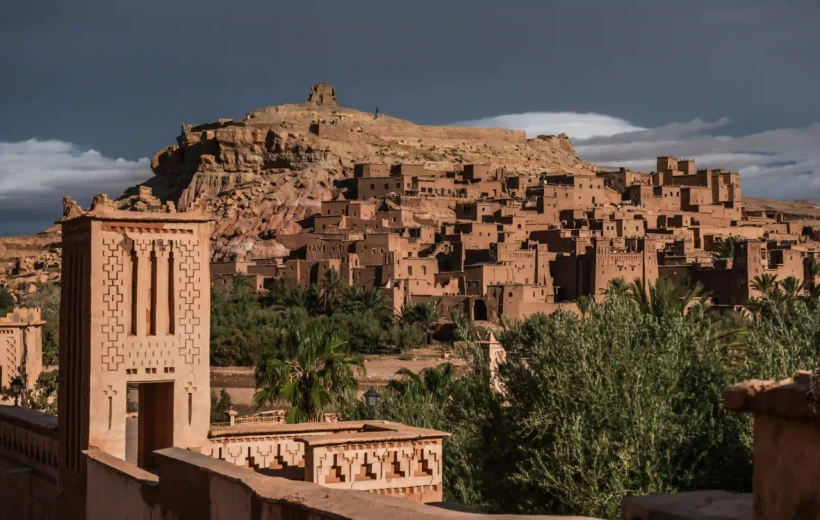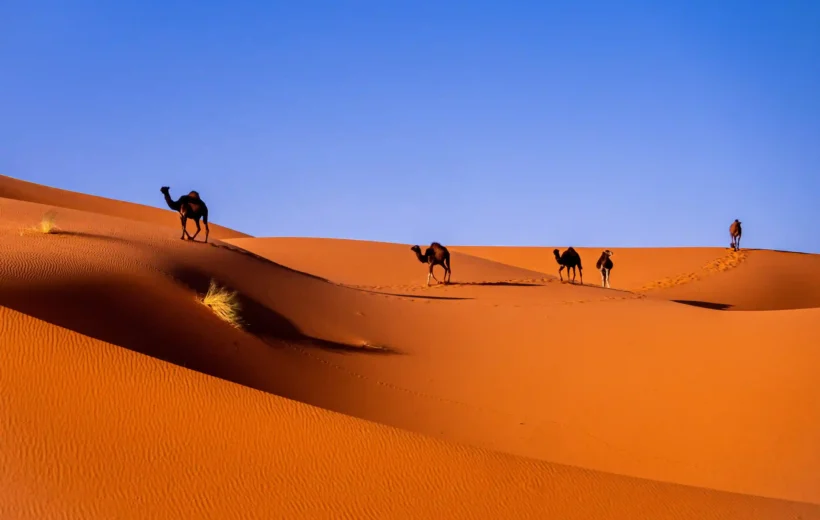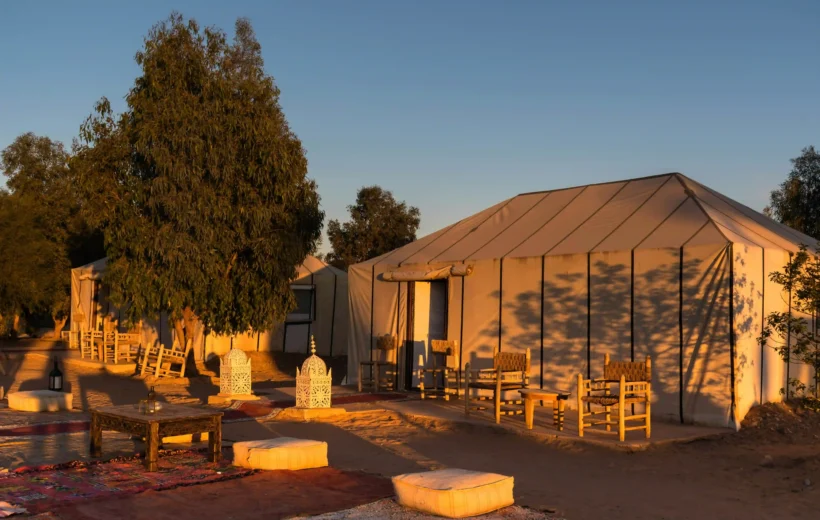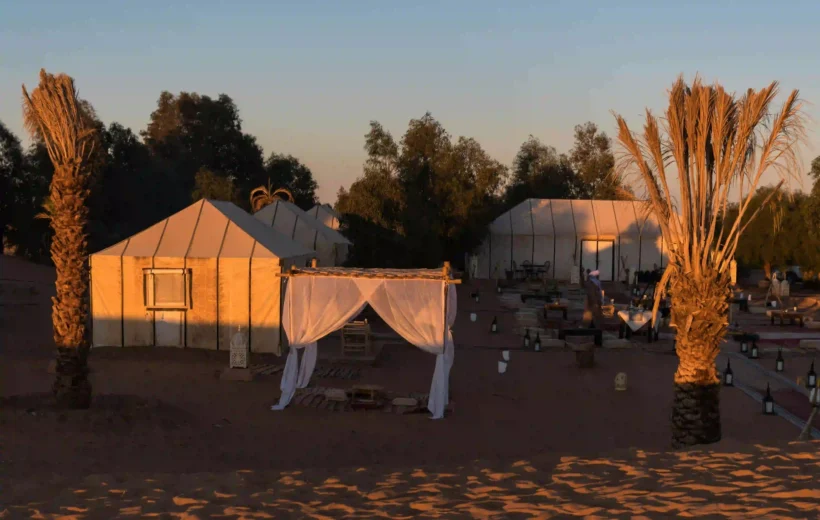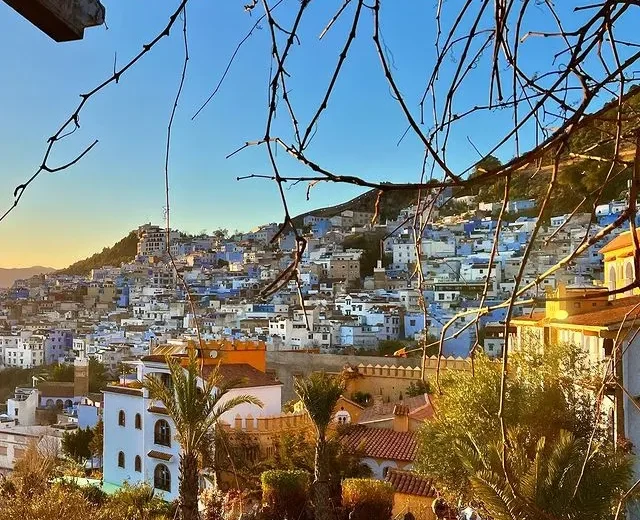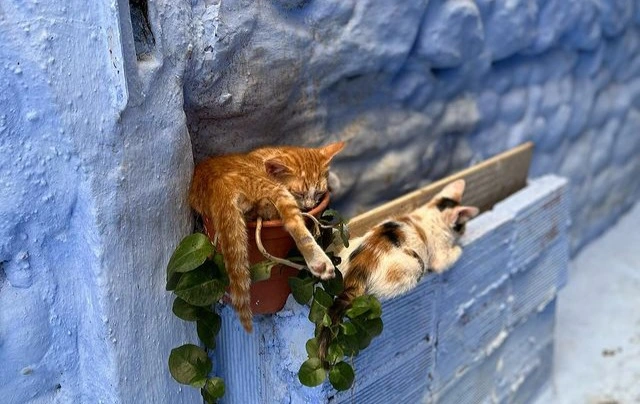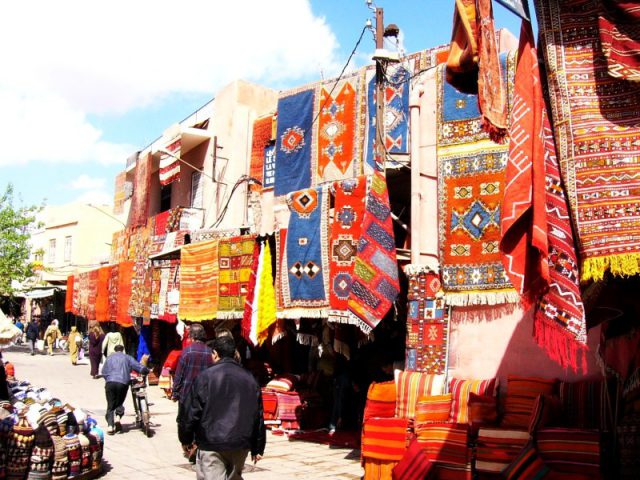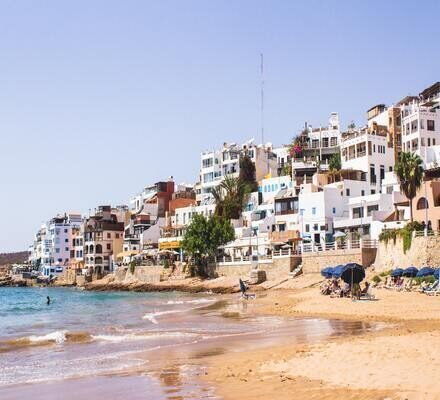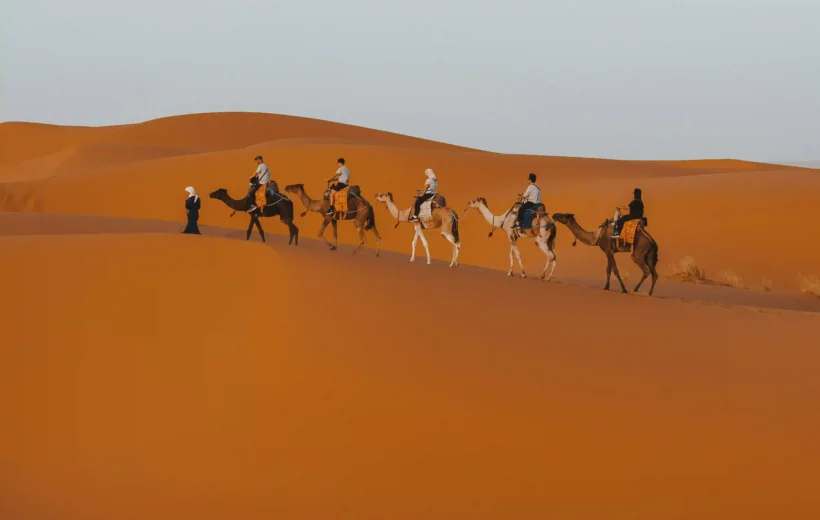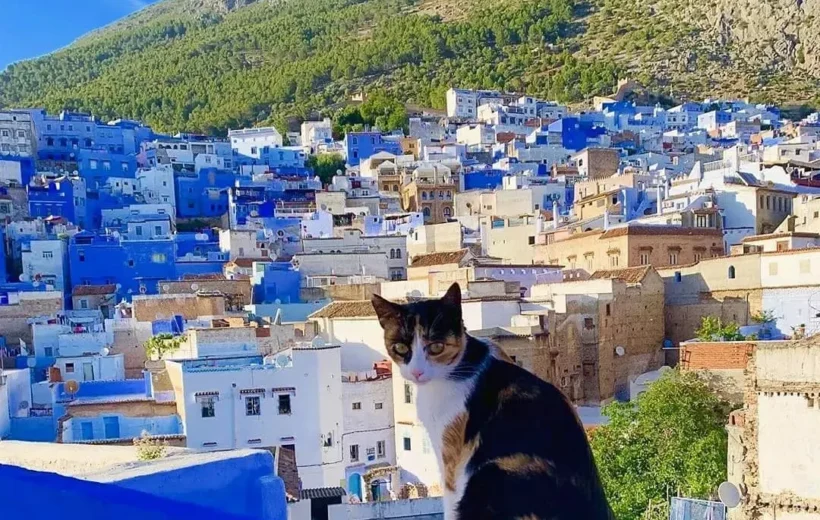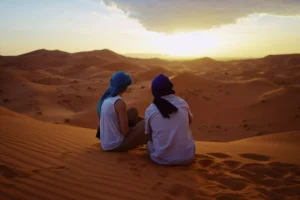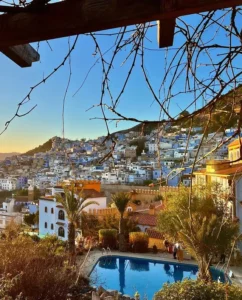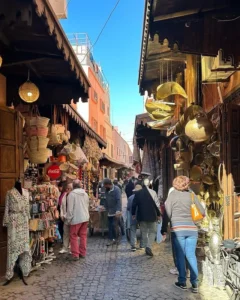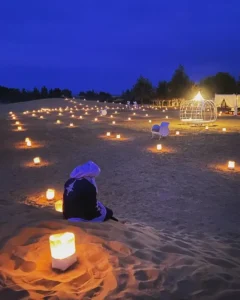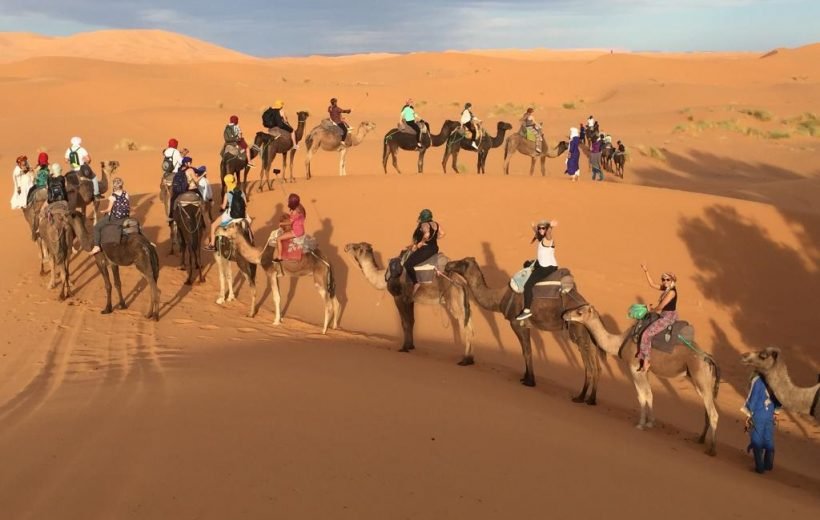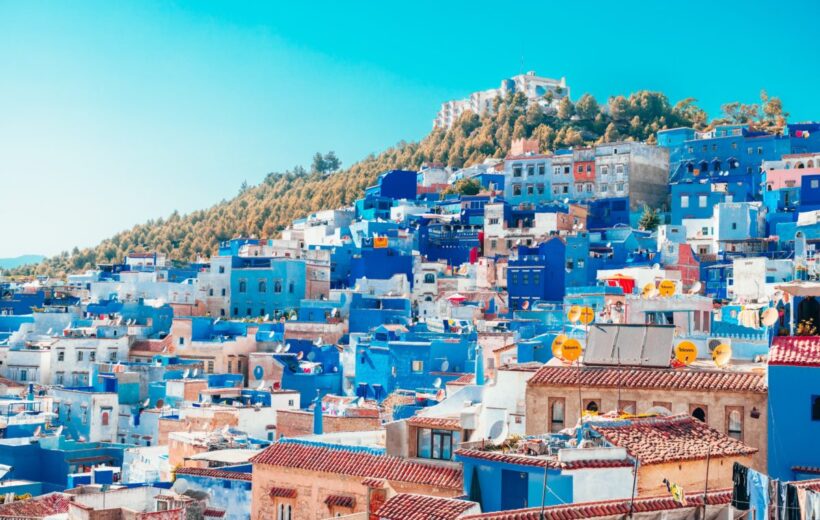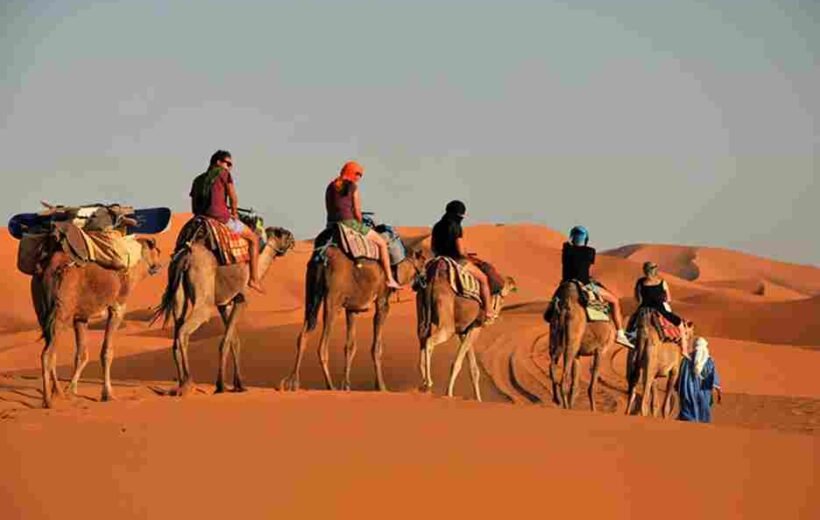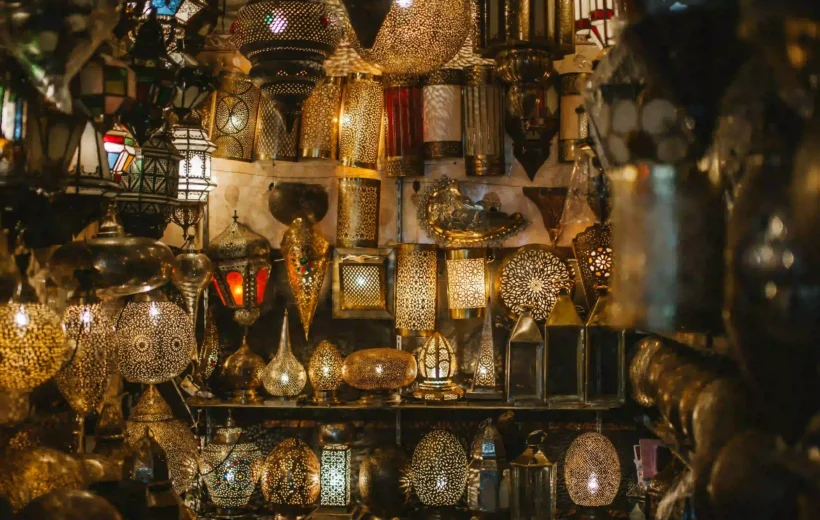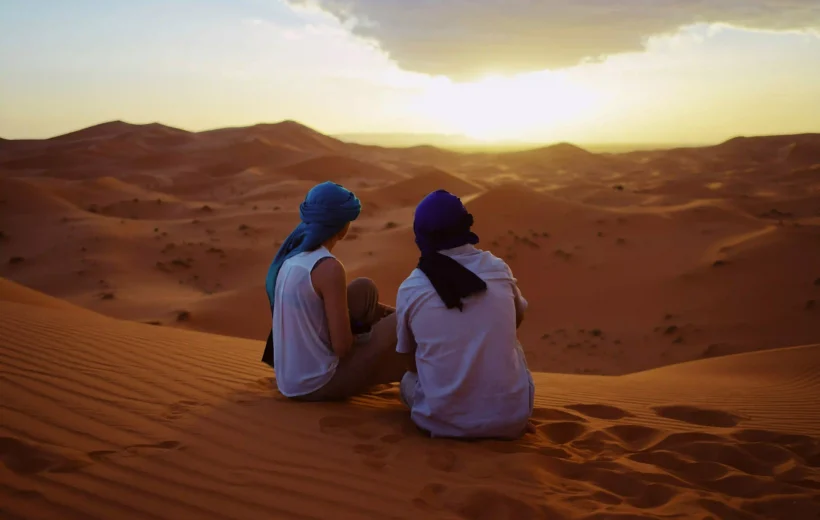Sahara Desert, Essaouira & Imperial cities Morocco tour – 12 days
Casablanca, Morocco
Overview
Casablanca Morocco Tour 12 days – overview:
If you're looking for a vacation that blends an adventure through the Sahara Desert, visits to Imperial cities, relaxing on Atlantic beaches, and an immersion into Moroccan culture and heritage, this 12-day tour of Casablanca is the perfect choice.
Cultural highlights include the Hassan II Mosque in Casablanca, the Hassan Tower and Mohammed V Mausoleum in Rabat, and the historical landmarks of Meknes. In Fes and Marrakech, you'll explore the ancient medinas, Madrassahs, leather tanneries, magnificent palaces, and lively souks.
Experience traditional Berber life by visiting Morocco’s most famous Kasbahs—Aït Ben Haddou, Telouet, and Amredhil—each showcasing unique architecture and heritage. The Roman ruins of Volubilis, a UNESCO World Heritage site, provide insight into Morocco’s ancient past, while the dramatic landscapes of the Dades and Toudgha Gorges reveal the country’s prehistoric geological wonders.
A journey into the Sahara brings an unforgettable experience, from camel rides to a luxury desert camp where you’ll witness breathtaking sunrises and sunsets, enjoy a traditional dinner, and be captivated by Berber music. A full-day camel trek through the towering dunes of the Sahara offers an adventure like no other.
Finally, the coastal town of Essaouira and the stunning drive along the Atlantic Ocean provide a refreshing contrast to Morocco’s diverse landscapes.
Morocco Imperial Cities tour from Casablanca 12 days – highlights:
- Explore Casablanca’s modern streets while visiting the iconic Hassan II Mosque.
- In Rabat, discover key landmarks such as the Hassan Tower, the Mausoleum of Mohammed V, and the historic Medina.
- Marvel at the UNESCO-listed Roman ruins of Volubilis and wander through Meknes’ Medina and ancient city gates.
- Immerse yourself in the lively souks, traditional leather tanneries, madrassahs, and grand palaces of Fes and Marrakech.
- Experience a camel ride across the golden dunes of Erg Chebbi, arriving at your luxury desert camp just in time for a stunning sunset.
- Enjoy a delicious dinner beneath a starry sky, followed by an evening of traditional nomadic music and drumming around a campfire.
- Admire Morocco’s most renowned Kasbahs, including Aït Ben Haddou, Telouet, and Amredhil.
- Discover Marrakech’s dynamic souks, tranquil gardens, magnificent madrassahs, and the vibrant atmosphere of Djemaa el Fna square.
- Conclude your journey by exploring the charming coastal towns and historic ports of Essaouira, El Jadida, and Azemmour along the Atlantic coast.
Included
- Transport in a private air-conditioned vehicle; 4×4 Toyota Prado TX or deluxe van and fuel
- Pick-up from and drop-off at your hotel or riad and transfer from and to the airport
- Experienced local English/French/Spanish/Italian-speaking Berber and nomad driver-guide
- Accommodation in air-conditioned rooms/suites with private bathroom
- All nights accommodation with breakfast
- 3x Dinners ( in the Sahara Desert & Boumalne Dades)
- A camel ride with a guide. And if you wish to do some sandboarding, just speak to the camp staff!
- Option to go to and return from the camp by 4×4
- Luggage service to the camp and all accommodation
- Berber drumming and music
- Free time to explore sites of interest, for walks, photos, and tea/coffee breaks
- The opportunity to ask the driver to stop when and where you wish
- Entrance fees (except in Casablanca, Rabat, Fes, and Marrakech)
- Sightseeing with local tour guides in Fes and Marrakech
- Local guides in the relevant places
- Tea, coffee and mineral water in the desert
Excluded
- Entrance fees in Casablanca, Rabat, Meknes, Fes, and Marrakech
- Lunches
- Drinks
- Tips
- Extras
Tour Plan
1st day: Casablanca – Rabat
Upon your arrival at Casablanca airport, our driver will warmly welcome you and transport you through the picturesque Moroccan countryside to the city in a comfortable, air-conditioned vehicle. Welcome to Morocco!
In the city center, you’ll have the opportunity to visit the Hassan II Mosque, inaugurated in 1993 to commemorate King Hassan II’s 60th birthday. As the second-largest religious monument in Africa, it also boasts the world’s second-tallest minaret. Keep in mind that visiting hours are limited on Fridays and religious holidays, and due to its popularity, there may be wait times at the ticket office. The guided tour lasts about an hour, with tickets priced at approximately 120 dirhams at the time of writing.
Next, you’ll head to Rabat to explore the historic Chellah, a fascinating 14th-century necropolis built upon ancient Roman ruins. Recent excavations have further uncovered its rich past, making it one of Morocco’s most intriguing heritage sites.
Your day concludes with a relaxing stay at a charming riad in the heart of the medina.
FYI: Guided tours of the Hassan II mosque are limited on Fridays or religious holidays.
2nd day: Rabat – Fes
After meeting your licensed local guide, embark on a full-day sightseeing tour of Fes, the oldest of Morocco’s four Imperial Cities. This journey takes you through its most iconic and fascinating landmarks, offering a deeper appreciation of this historic Moroccan treasure.
Depending on time and your interests, your exploration may include:
- The University of Al Quaraouiyine: Founded in the 9th century, this prestigious institution is recognized as one of the world's oldest continuously operating universities, serving as a center of knowledge for centuries.
- Bou Inania Medersa: This stunning religious school showcases intricate mosaics, delicate stucco work, and exquisite Islamic architecture, highlighting the artistic mastery of the era.
- The Royal Palace: While the interior is not open to visitors, the grand entrance of the palace is a remarkable example of Moroccan craftsmanship, featuring elaborate tilework and an ornate golden gate.
- The Medina: Step into the UNESCO-listed Medina of Fes, where winding alleys lead to vibrant souks, ancient mosques, and historic sites, preserving the city's medieval charm.
- Leather Tanneries: Witness the age-old leather production techniques at the famous tanneries, offering a glimpse into Fes’ renowned craftsmanship and heritage.
- Local Market: Experience the lively atmosphere of Fes’ bustling markets, filled with an array of handcrafted goods, including spices, textiles, ceramics, wooden art, silver jewelry, and leather products.
- Nejjarine Museum of Wooden Arts and Crafts: Conclude your tour at this beautifully restored caravanserai, where intricate wooden artifacts and traditional craftsmanship showcase Morocco’s rich artistic heritage.
Your sightseeing adventure ends as your guide escorts you back to your riad, leaving you with unforgettable impressions of Fes.
4th day: Fes – Merzouga
Departing from Fes at 8 a.m., the journey begins with a drive through Ifrane, a town known for its sloping-roofed houses—an architectural rarity in Morocco designed to withstand heavy snowfall.
Near Azrou, located at an altitude of 1,250 meters, you’ll pass through oak and cedar forests of the Middle Atlas, where you might spot Barbary apes. Azrou’s name, derived from the Berber language, means “stone” or “rock.” Continuing along the N13 highway, the route leads south through the Middle Atlas, passing Timahdite—a Berber-named village, where the feminine nature of the word is indicated by its “t” prefix and suffix.
The journey reaches Midelt, situated at 1,508 meters, often called the “apple capital” of Morocco due to its thriving orchards at the base of Ayachi Mountain. This town is a key agricultural and commercial hub, as well as a major center for mining minerals such as fluorite, vanadinite, quartz, and cerussite. Here, you’ll stop for lunch.
Resuming the trip, you’ll travel over the Tizi-n-Talghemt pass, also known as the “she-camel” pass, before descending into the lush Ziz Valley. This region is famous for its extensive palm groves and the vast oasis that stretches along the route. Scattered throughout the valley are countless “ksars,” traditional fortified villages made up of clustered homes.
Next, you’ll arrive in Er Rachidia, a mining town known for its copper and malachite deposits, followed by Erfoud, which hosts an annual date festival and is renowned for its abundance of fossils. Many local shops display intricate fossilized artifacts, offering a fascinating glimpse into the region’s geological history—though there is no pressure to make a purchase!
The journey continues to Rissani before reaching the breathtaking red dunes of Erg Chebbi in Merzouga. Here, you’ll embark on a camel ride, either departing from or heading toward your desert camp, for an unforgettable experience in the Sahara.
You have dinner and spend the night at a luxury camp with private bathroom, king-sized beds, beautiful Moroccan furnishings and lamps tastefully arranged to enhance your enjoyment of the silence and beauty of the dunes.
5th day: Merzouga
After breakfast, you’ll embark on a camel trek into the dunes, accompanied by a skilled camel handler. The journey consists of approximately three hours of walking in the morning and another three hours in the afternoon. Along the way, you’ll stop for lunch at a nomadic camp in the desert before returning to the bivouac for dinner and an overnight stay.
Alternatively, after breakfast, you can take the opportunity to further explore the desert. Your first stop will be the village of Khamlia, home to the Gnawa people, known for their vibrant traditional music, which traces its roots back to sub-Saharan Africa during the trans-Saharan slave trade. You’ll have the chance to enjoy a live performance of their rhythmic, spiritual melodies.
Next, you’ll visit Rissani, the historic birthplace of Morocco’s ruling Alaouite dynasty. The town is encircled by 360 ksars (fortified villages with numerous towers) and is renowned for its bustling souk, held three times a week. As you explore the market, you’ll find an array of goods, including spices, fresh produce, household essentials, and handcrafted items. Rissani also stands on the ancient ruins of Sijilmassa, a former trade hub where salt caravans from Timbuktu once converged.
In the afternoon, you’ll mount your camel for a guided trek across the golden dunes of Erg Chebbi near Merzouga, lasting about an hour to an hour and a half. As the sun sets over the desert, you’ll take in the breathtaking views before arriving at camp. The evening concludes with a traditional dinner, followed by drumming and lively music around the campfire under the starlit sky.
Please note that weather conditions in southern Morocco can be unpredictable. From May to the end of September, it may become too hot for trekking in the dunes, and we may recommend following this alternative itinerary instead.
6th day: Merzouga – Dades Gorges
If you rise early, you’ll be treated to the breathtaking sight of the sunrise, where the shifting colors and shadows over the dunes create a mesmerizing display. After enjoying breakfast at the camp, the journey continues toward Tinghir and the stunning Toudgha Gorges.
Along the way, you’ll pass by the ingenious underground water channels known as "khettarat." You can descend into these ancient irrigation systems to appreciate their remarkable engineering, designed to minimize evaporation during the scorching summer months. These channels begin at a higher elevation and gradually emerge at the surface, efficiently directing water into the fields. For a deeper understanding of this irrigation technique, you might find Andrew Wilson’s research insightful.
Upon reaching the gorge and valley, you’ll have the opportunity to take a scenic walk—either beyond the gorge itself or through the lush village gardens and fields leading up to it. From there, the journey continues into the breathtaking Dades Valley.
Millions of years ago, the area that now forms the Dades Gorges lay beneath the sea. Over time, immense deposits of sediment accumulated around vast coral reefs, gradually compressing into sedimentary rocks such as sandstone and limestone. Geological movements eventually caused this region to rise above sea level, shaping the Atlas Mountains and the surrounding dramatic landscape.
Your day concludes with an overnight stay in a charming hotel or traditional kasbah.
7th day: Dades Gorges – Ouarzazate
After breakfast, you’ll explore the breathtaking Dades Gorges with a short walk to take in the stunning scenery. Returning to the vehicle, the journey continues toward Ouarzazate, taking an off-road route along the Boutarar piste to visit Berber nomads in their cave dwellings. Here, you’ll share a traditional glass of tea with them, gaining insight into their challenging way of life as they strive to raise their children and tend to their goats in the harsh, arid landscape.
The route then passes through the Valley of the Roses, renowned for its annual Rose Festival in May. This region is famous for producing high-quality rose-based cosmetics and toiletries, which are highly valued across Morocco.
Next, in Skoura, you’ll visit the picturesque oasis and Kasbah Amredhil, a beautifully restored kasbah that offers a fascinating glimpse into traditional Berber life. Constructed entirely from adobe, this architectural masterpiece is designed to provide warmth in winter and coolness in summer due to its thick earthen walls.
A 45-minute drive brings you to Ouarzazate, where you’ll spend the night in a charming guesthouse, preparing for the next leg of your adventure.
8th day: Ouarzazate – Marrakech
After breakfast, the journey continues to Kasbah Aït Ben Haddou, one of Morocco’s seven UNESCO World Heritage sites and a popular filming location for numerous Hollywood movies. As the most famous kasbah in the country, some of its structures date back to the 17th century.
From there, you’ll drive through the breathtaking Ounila Valley, a winding route filled with striking rock formations, ever-changing hues of soil, and picturesque Berber villages, gardens, and smaller kasbahs.
The trip then leads to Telouet, nestled deep in the Atlas Mountains. This historic kasbah was once the residence of El Glaoui, the last Pasha of Marrakech, who controlled the strategic Tizi-n-Tichka pass, the highest in Africa. After his downfall, the kasbah was left abandoned, its once-magnificent walls exposed to the elements. At the farthest end, you’ll find remarkably preserved traditional interior decorations that provide a glimpse into its former grandeur.
Unfortunately, due to the earthquake that struck Morocco in September 2023, the kasbah has been severely damaged and remains closed. However, you can still admire its impressive exterior with the help of a local guide who will bring its rich history to life.
By late afternoon, after crossing the Tichka Pass, you’ll arrive in the vibrant city of Marrakech.
9th day: Marrakech Sightseeing Tour
Marrakech is best known for its bustling Djemaa El Fna, a lively square filled with fresh juice vendors, dried fruit and nut sellers, henna artists, snake charmers, storytellers, and countless food stalls that truly come alive in the evening.
Depending on your schedule and interests, you can explore several fascinating attractions:
- Majorelle Gardens – Originally designed by Jacques Majorelle and later owned by Yves Saint Laurent, these peaceful gardens feature exotic plants, fish ponds, and striking Majorelle blue The site also houses a Berber museum, a café, and a restaurant serving Moroccan-inspired dishes.
- Le Jardin Secret – A beautifully restored Islamic Paradise Garden, divided by narrow water channels, offering a serene escape with fountains and lush greenery, as well as exhibits detailing its restoration.
- Koutoubia Mosque – The largest mosque in Marrakech, this landmark is named after “al-Koutoubiyyin” (booksellers), as the area once housed numerous book markets. Built in the Almohad architectural style, its 69-meter minaret is topped with four copper globes.
- El Bahia Palace – Constructed between 1894 and 1900 for Ahmed Ibn Moussa, the Grand Vizier of Morocco, this grand palace boasts 160 intricately decorated rooms surrounding beautiful courtyards, featuring zellij tilework, stucco panels, cedar wood carvings, marble finishes, and an expansive eight-hectare garden.
- Ben Youssef Medersa – Originally founded in 1331 by Sultan Abou el Hassan and later rebuilt in the 1560s by the Saadians, this Quranic school once housed 800 students. Its architecture is a stunning showcase of zellij tilework, carved cedar wood, and detailed stucco plasterwork.
- Saadian Tombs – Dating back to the reign of Sultan Ahmad al-Mansur (1578–1603), these tombs, rediscovered in 1917, serve as the final resting place for around sixty members of the Saadi Dynasty, making them a site of historical significance.
- The Jewish Mellah – Like many Moroccan cities, Marrakech has a Jewish quarter (Mellah), historically home to non-Muslim communities, though not exclusively Jews. While some synagogues remain, few are still active today, and Mellahs in smaller towns often go unnoticed.
- The Souks – The vibrant souks are the heart of Marrakech, where you can browse a wide variety of handicrafts, spices, traditional medicines, and more. Expect to find leather goods, Moroccan slippers (babouches), textiles, pottery, and silver jewellery, with plenty of opportunities to haggle.
With its rich culture, striking architecture, lively markets, and captivating atmosphere, Marrakech feels like a city straight out of "A Thousand and One Nights."
FYI: You can buy entry tickets at each monument during your guided tour of Marrakech, but Majorelle Garden tickets must be booked online in advance.
Optional Experience: A traditional Moroccan cooking class can be arranged instead of a city tour, available for an additional fee.
Accommodation will be in a riad for the night.
10 – 11th day: Marrakech – Essaouira
Essaouira is a favorite among many travelers! Once known as Mogador during the Portuguese era, this picturesque coastal town is renowned for its local handicrafts, particularly thuja wood furniture, carvings, and small artifacts, which are sold in countless shops along its charming, windy streets.
The town gained cinematic fame when Orson Welles filmed "Othello" here, with its Portuguese ramparts featured in the iconic opening scene. Visitors can also stop by a women’s cooperative, where argan nuts are hand-processed into argan oil, a versatile product used in both culinary dishes and skincare.
At the seafront, fresh seafood is a highlight—customers can select their fish and have it prepared on the spot. With its excellent surfing conditions and a beautiful beach, Essaouira is an ideal destination for those who love the coast. The town enjoys a pleasant microclimate, staying mild in winter and cool in summer.
Essaouira is the perfect place to unwind after a desert adventure, whether by relaxing on the beach, sipping tea at cafés by the port, or exploring the many unique shops. Nights are spent in a traditional riad in the heart of the town.
12th day: Essaouira – Casablanca
After breakfast, the journey back to Casablanca Airport begins, taking approximately five hours by car. Along the way, there’s an optional stop in El Jadida to explore the Portuguese cistern and the historic Portuguese quarter that surrounds it.
The drive continues north along the coastal road, passing through Azemmour (also known as Azamor), a small, ancient town on the left bank of the Oum Er-Rabia River. The town’s name originates from the Berber word "Azmmur" or "Azemmur," meaning "the olive."
Finally, your 12-day Casablanca Morocco tour concludes as your driver drops you off at the airport, marking the end of an unforgettable journey.
NOTE !
NOTE! If the itineraries that we offer does not match what you’re looking for contact us and we will prepare a trip that suits your own needs and requirements.
You may like
Reviews
No reviews yet
BOOK THIS TOUR
NO BOOKING OR CREDIT CARD FEES BEST PRICE GUARANTEE Quality services
You may like this
Build new Tour
Yes you can cutpmize any tours


